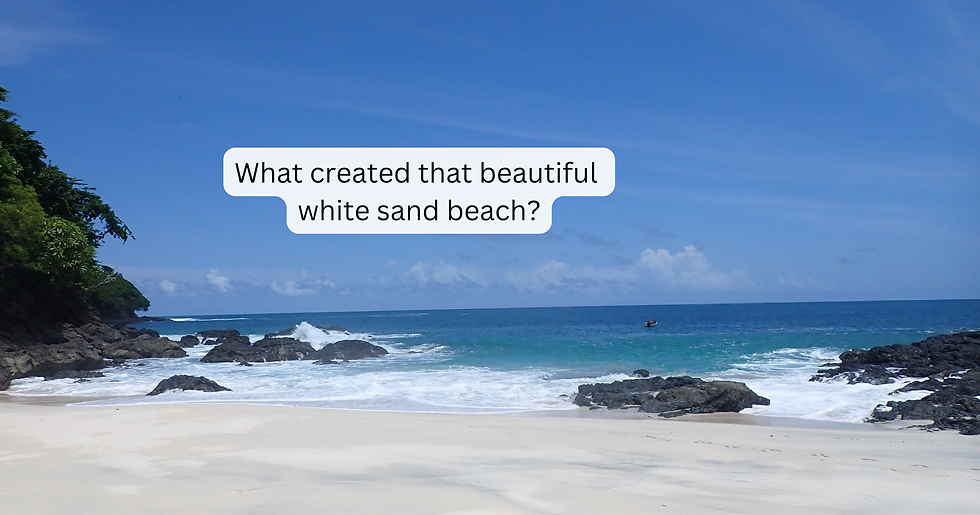Golden Orb Weaver Spider of Panama
- Cari Mackey

- Mar 3, 2024
- 3 min read

Moment of vulnerability - I gotta be honest with you, this has been one of my least favorite emails to write but I have to say, I'm quite proud of myself for doing it.
F.E.A.R. - Face Everything And Rise
Phobias are not only ridiculous but man, they can be paralyzing! Living in the jungle and agreeing to live with all of its beautiful inhabitants, as well as guiding our guests on hikes through the jungle without harming these animals has forced me to get past quite a few fears. It's hard to trust your guide if she freaks out over a tiny spider so...face it I did.
We all know, fear is really just a lack of information and understanding so, let's take a moment to learn about and try to fall in love with this colorful spider called the Golden Orb Weaver or Banana Spider. Many of our guests have noticed that we don't have many mosquitoes here thanks to this spider and the bats. The Golden Orb Weaver, like many spiders is a carnivore and like all spiders is a key species in balancing the eco system as they patiently wait for bugs to get trapped in their sturdy, well-constructed webs.
Arguably beautiful because of her colors, she still causes fear in a lot of people and one may argue she's not that pretty. But, phobias be phobias and you can't help but appreciate her 80's style leg warmers, her colors, and check this out, she has 8 eyes! She definitely commands attention with her colors, her size at 3 to 6 inches long (7.6 cm), and her ability to quickly weave a web up to 5 feet wide (1.5 m)!
Her inner web is made of thin transparent silk while the outer web is made of golden colored thick silk threads that she uses to attach to surfaces like trees. The silk is so strong that it catches not only small insects but can even trap a small bird like a hummer and even bats who she will methodically wrap up and feed upon them.
Females are the larger spider in the center of the web whereas the males are the smaller ones on the outside of the web waiting for some nooky-nooky time with big momma. After copulation, the female lays her fertilized eggs (approximately 300) in large sacs on the side of a tree where they incubate for about 2 weeks.
The females are the web builders and the hunters. The males stay on the periphery of the web waiting for the right time to mate. The male rarely survives after the mating process so the female will then have several partners over the course of her year long life laying thousands of eggs.
I sense you might be warming up to this hardworking little weaver of the jungle and I am too! We always respect their space outside our living areas knowing they have essentially created a natural mosquito barrier to protect us, our guests, and although I'm not about to kiss these little beauties, I will never kill one.
So, If this was a tough read for you because of your arachnophobia, thank you for making it through to the end and I hope this helped you get past the fear of spiders at least this one!
Your Friends in Morrillo,
Cari and Ryan Mackey
Owners and Hosts
Morrillo Beach Eco Resort









Comments